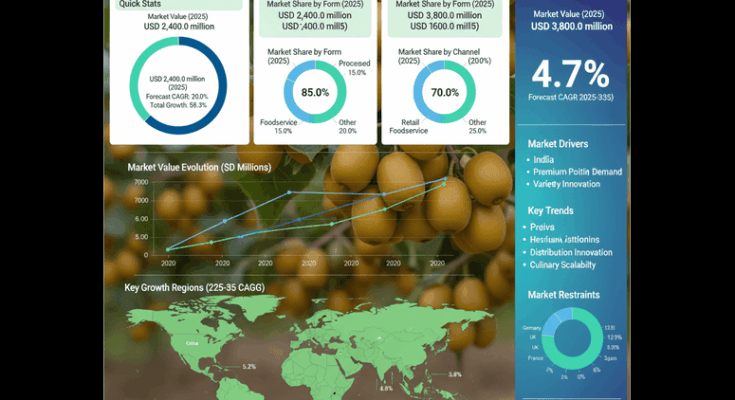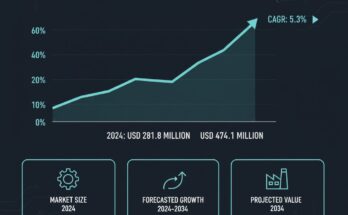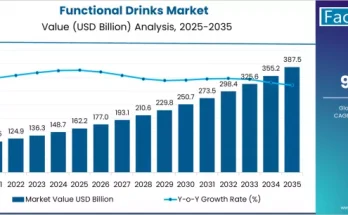The global Gold Kiwifruit Market is entering a new phase of strategic growth and premiumization, forecast to expand from USD 2.4 billion in 2025 to USD 3.8 billion by 2035, reflecting an absolute growth of USD 1.4 billion and a compound annual growth rate (CAGR) of 4.7%. This surge marks a 58.3% total increase, driven by health-conscious consumers, global retail transformation, and the rising appeal of high-value exotic fruit varieties.
According to the latest industry outlook, fresh gold kiwifruit will continue to dominate the market, accounting for 85% of total value in 2025, while the retail distribution channel will maintain a commanding 70% market share, supported by expanding modern retail infrastructure and evolving consumer lifestyles. The leading variety, Zespri SunGold, holds an estimated 75% global share, cementing its position as the benchmark for premium fruit quality and consistency.
A Premium Fruit Category with Transformative Global Potential
The gold kiwifruit market’s rise is underpinned by three interconnected forces: health and wellness awareness, premium produce consumption, and retail modernization. As consumers increasingly prioritize nutrition and quality, gold kiwifruit—renowned for its high vitamin C content, antioxidants, and digestive health benefits—has emerged as a flagship product in the global “superfruit” category.
Manufacturers and distributors are leveraging these shifts by investing in controlled-atmosphere logistics, cold-chain integration, and post-harvest innovations to maintain product integrity across international markets. This has transformed gold kiwifruit from a niche seasonal product into a strategically positioned year-round retail commodity.
“The gold kiwifruit segment embodies the intersection of health, taste, and innovation,” said a senior market analyst at AgriInsights Global. “Its strong CAGR and expanding footprint across premium retail and foodservice channels make it one of the most resilient and attractive fruit markets through 2035.”
Regional Growth Dynamics: Asia Pacific Leads the Charge
Asia Pacific remains the growth engine of the global market, driven by rapid retail modernization, rising disposable incomes, and cultural acceptance of premium imported fruit.
- India is forecast to record the fastest CAGR at 5.8%, fueled by a rising middle-class population, health-driven consumption, and expansion of cold-chain logistics for imported fruit. The country’s emerging e-commerce and modern retail sectors are opening direct-to-consumer channels for premium fruit imports.
- China, with a 5.2% CAGR, is strengthening domestic gold kiwifruit production through agricultural innovation and variety diversification. Local producers are investing in high-performance cultivars to serve both fresh and processed segments.
- Japan and South Korea, with growth rates of 3.6% and 3.5% respectively, are sustaining premium market dynamics through quality certification, long-term supplier partnerships, and consumer education on nutritional benefits.
In North America, the United States continues to represent a mature yet lucrative market for premium fruit suppliers. The U.S. retail ecosystem, emphasizing food safety compliance, nutritional labeling, and culinary innovation, is driving stable growth at 4.0% CAGR. Retail chains are integrating gold kiwifruit into functional food, beverage, and gourmet applications, signaling growing demand from both consumers and foodservice sectors.
Europe, led by Italy and Germany, is evolving as a premium consumption hub. Italian consumers’ preference for authentic taste and superior freshness positions gold kiwifruit as a gourmet essential, while Germany’s sophisticated retail infrastructure supports strong import volumes and organic certification programs. European operations are increasingly defined by traceability requirements, cold-chain optimization, and compliance with EU quality standards—factors that favor established producers and integrators with proven quality systems.
Market Drivers: Innovation, Quality, and Health Positioning
Gold kiwifruit’s robust performance is supported by several long-term industry drivers:
- Health and Nutrition Leadership: High vitamin C, antioxidant concentration, and dietary fiber make gold kiwifruit a standout fruit in wellness and immunity-boosting categories.
- Retail and Supply Chain Evolution: Advanced packaging, temperature-controlled transport, and improved shelf-life solutions are extending global reach and reducing waste.
- Agricultural Innovation: Investments in horticultural R&D and cultivar improvement are enabling disease-resistant varieties, extended harvest windows, and enhanced nutritional profiles.
- Culinary and Functional Applications: Rising demand from the beverage, dessert, and functional food industries is accelerating the processed segment’s value growth.
However, the market faces notable challenges, including seasonal supply limitations, premium pricing pressures, and supply chain complexity. Producers that integrate advanced quality control systems, invest in post-harvest technologies, and build collaborative retail partnerships will gain a decisive competitive edge.
Competitive Landscape: Consolidation and Premium Brand Leadership
The gold kiwifruit market is led by global giants such as Zespri International, Dole, and San Miguel, supported by specialized producers like Jingold, Kiwi Produce Ltd, and Seeka. These companies dominate through vertical integration, cultivation expertise, and long-term retail partnerships that ensure consistent quality and supply reliability.
Profitability in the sector is increasingly consolidating both upstream—within large-scale cultivation systems—and downstream—among retail distributors with strong brand recognition. Industry leaders are focusing on quality assurance, supply reliability, and consumer education to build sustained brand loyalty in a competitive marketplace.
Emerging strategies among top players include:
- Digital consumer engagement to highlight nutritional benefits and preparation methods.
- Cultivation licensing to scale premium variety production.
- Regional partnerships to meet local regulatory and taste preferences.
- Sustainability integration across packaging and logistics to meet retailer ESG requirements.
Opportunities for Manufacturers and Industry Stakeholders
For manufacturers and agri-tech innovators, the gold kiwifruit market presents a fertile opportunity landscape. Investment in controlled-environment agriculture, sustainable packaging materials, ripening technologies, and data-driven supply chain optimization will define the next phase of market leadership.
As premium fruit categories continue to outperform conventional produce segments, manufacturers capable of combining quality differentiation with operational scalability will find substantial value creation potential. The evolving landscape underscores the growing need for collaborative partnerships between growers, processors, and distributors to meet the rising global appetite for premium exotic fruits.
Browse Full Report : https://www.factmr.com/report/gold-kiwifruit-market
About the Gold Kiwifruit Market Report
The Gold Kiwifruit Market Forecast and Outlook 2025–2035 delivers a comprehensive view of growth projections, key market dynamics, segmentation by form, channel, and variety, and detailed country-level analysis. The report highlights strategic opportunities for industry stakeholders aiming to capitalize on the market’s rapid evolution toward premium quality, health positioning, and supply chain innovation.



